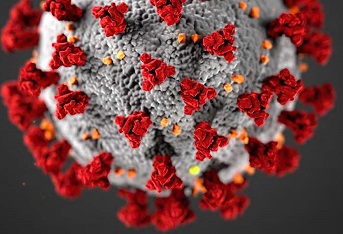Study offers insights for measuring COVID-19 in wastewater, reducing variability

SCCWRP and its partners have developed an improved understanding of what contributes to sources of variability in methods for measuring COVID-19 virus levels in wastewater streams – key insights that can help water-quality managers use wastewater influent to track the prevalence of COVID-19 infections in communities.
The SARS-CoV-2 measurement methods comparison study, completed in April, examined how efforts to quantify virus levels in wastewater can be impacted by numerous sources of variability in the specific measurement methods used.
Because the virus is so new, multiple measurement methods – and multiple variations of methods – are presently being used to store, process and analyze wastewater samples for the COVID-19 virus. Improved standardization will help ensure that the methods can produce reliable, comparable data.
Water-quality managers need to understand the impacts of all of these potential sources of variability as they work toward building a wastewater surveillance system that can provide ongoing, routine monitoring of COVID-19 community infection rates.
COVID-19 wastewater monitoring has the potential to provide an early-warning indicator of upticks in community infections, providing critical lead time for public health officials working to contain outbreaks.
Wastewater monitoring also could offer more comprehensive, accurate insights about community infection rates than individual testing, which is disproportionately weighted to the subsets of the population choosing to be tested.
Already, more than 40 wastewater treatment agencies in California – including all four of SCCWRP’s wastewater member agencies – have begun measuring the COVID-19 virus in their wastewater streams.
Although the data are being reported to public health officials, researchers first need to understand how variations in the methods used to measure virus levels may have affected the accuracy and comparability of the results.
During the measurement methods comparison study, SCCWRP and its partners conducted a series of controlled experiments to directly compare the accuracy, repeatability and comparability of different measurement methods and variations of methods.
Researchers found that some variables have a disproportionately large impact on measurement sensitivity, including the use of pasteurization to neutralize viral particles and the use of freezing to preserve samples.
Researchers have recommended avoiding both techniques, and instead chemically inactivating viruses and concentrating viruses on a filter before freezing, respectively.
Researchers, meanwhile, found that other types of variability in measurement methods had less of an impact on results, including which specific gene target is used to quantify the virus’s RNA, and whether grab vs. composite samples are collected.
The study also identified approaches that could improve the accuracy of results, including inactivating the virus chemically and concentrating the virus using filters.
The California Water Quality Monitoring Council, which has formed a subcommittee to explore how to synchronize and compare COVID-19 wastewater data, will use the results of the SCCWRP-led study to inform its ongoing deliberations. The subcommittee is working to develop recommendations about how California should make use of the data going forward, including correlating the data to clinical testing data.
The study’s findings add to a growing body of knowledge about variability when measuring COVID-19 virus levels in wastewater.
For example, an interlaboratory comparison study published earlier this year by the Water Research Foundation found that laboratories analyzing the same set of samples can generate data with 100- to 10,000-fold differences in virus concentrations measured, underscoring the importance of reducing these sources of measurement variability.
SCCWRP has been coordinating closely with multiple organizations that are working to reduce measurement variability.
For more information, contact Dr. John Griffith or Dr. Joshua Steele.
More news related to: Microbial Source Tracking, Microbial Water Quality, Top News